#african american woman composer
Text
#music history#composers#florence price#ethel smyth#black woman composer#african american woman composer#lesbian composer#feminist history#suffragettes
4 notes
·
View notes
Text

She was called Phillis, because that was the name of the ship that brought her, and Wheatley, which was the name of the merchant who bought her. She was born in Senegal.
In Boston, the slave traders put her up for sale: “She's 7 years old! She will be a good mare!”
At thirteen, she was already writing poems in a language that was not her own. No one believed that she was the author. At the age of twenty, Phillis was questioned by a court of eighteen enlightened men in robes and wigs.
She had to recite passages from Virgil and Milton and some verses from the Bible, and she also had to vow that the poems she had composed were not copied. From a chair, she underwent her lengthy examination, until the court approved her: she was a woman, she was Black, she was enslaved, but she was a poet.
Phillis Wheatley was the first African-American writer to publish a book in the United States.
✍🏾: Black History Studies
500 notes
·
View notes
Text
[“My girlfriend (I’ll call her Rachel) and I have been riding the same bus to the Metro station together nearly every weekday morning for the last two years. After a few weeks, all the commuters on the bus start to look familiar. You begin to notice who travels with whom. You start to give people secret nicknames (Franklin Planner Guy, Park Service Guy, Beautiful Woman, Vancouver Boy). Pretty soon you start noticing each other around town, start saying hi at the farmers’ market. You don’t know each other’s names, but if someone disappears from their regular bus for more than a few days, you begin to wonder if they’re okay, if they’ve moved or changed jobs. It’s an odd sort of community.
Rachel and I wondered sometimes if our fellow workers had nicknames for us, too. What would we call ourselves? Dress Alike Girls? We’ve committed the Ultimate Lesbian Sin—dressing alike—on more than one occasion. We have totally dissimilar clothing tastes, but an unfortunate affinity for the same colors, so we’ve been known to show up at each other’s houses in the morning to find one of us wearing tailored silk khakis, black pumps, and a dark blouse—that would be Rachel—and the other (that would be me) in khaki shorts, black sneakers, and a dark blue T-shirt. Embarrassing. We finally decided that our bus gang would call us Jointed at the Hip Girls. We’d sit at the back of the bus, hold hands sometimes, whisper. We didn’t need to wear T-shirts that said “Dyke.”
But we didn’t actually think about it very much either. We felt safe enough in our little bus world to be “straight acting” (ha ha).
And one morning, when we were standing on the platform at the Metro station, one of our bus buddies approached. She’s tall, light-skinned African-American woman with a penchant for outfits that Rachel admires, and we had wondered if she were family; she had that look about her. She apologized for interrupting and said, I just wanted to tell you guys that it’s so nice to see you in the mornings. I looked at Rachel, a little puzzled. I mean, the woman continued, You both just look really happy when you’re together, you sort of glow.
I started to blush. My ears got very, very hot.
Umm, I umm, I said.
Rachel was more composed (although she was blushing too). She thanked the woman graciously, and asked her name. Kara, she told us. I actually ran into Kara the other day at the grocery store, and we rode the bus home together. I found out that she’s a poet and a sculptor, and she lives three blocks from me. I told her I was writing about her in an essay I was doing for an anthology. She laughed and said, Oh, because of that thing I did that morning?, and chatted for a few more minutes. I don’t remember the rest of that conversation either, really. After all this time, is it possible that I’m still traumatized at the thought of coming out?”]
kanani kauka, from freedom rings, from a woman like that: lesbian and bisexual writers tell their coming out stories, 2000
314 notes
·
View notes
Note
i know that this is a wide scope question but what philosophy books/authors do you think are necessary for a theological self study with a liberation slant?
if i were composing an undergraduate intro class to liberation theology i would include gutierrez, romero, cone, gaudium et spes, ateek, dolores williams, wariboko, khumalo’s chapter in life under the baobab tree, althaus-reid, saidiya hartman, grace cho, and hortense spillers. this covers liberation theology done from the following frameworks: black theology, womanism, latin american theology, palestinian theology, african theology, korean feminist theology, and generally, post-colonialism
#hope you meant lib theology broadly and not just latin american#but gutierrez and romero really cover the intro there#as well as vatican ii#ask#this is actually such a good syllabus i wish this was my area of study
126 notes
·
View notes
Text
Eartha Kitt
An American actress, singer, and activist, Eartha Kitt (1927-2008) remains an incredibly influential and controversial figure in American culture.

Born on a cotton plantation to a single mother of Cherokee and African descent (and almost certainly a White father) and raised in Harlem, New York City, Kitt studied performing arts from a young age. Her distinctive voice made her stand out in the Katherine Dunham Company, the first African-American dance company.
In 1950, Kitt starred as Helen of Troy in Dr. Faustus (a role given by Orson Welles, who called her "the most exciting woman in the world"). Her fame grew, until she was featured as Catwoman in the Batman television series in the late 1960s.
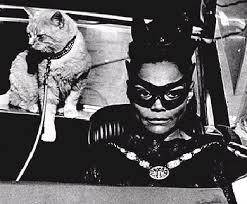
Her professional life took a massive hit when she made anti-Vietnam war statements during a White House luncheon, making First Lady Johnson burst into tears. In response, the CIA defamed her, and Kitt focused on her work abroad in Europe and Asia for a time. Kitt could speak in four languages (English, German, Dutch, French) and sing in eleven.
In the late 1970s and the 1980s, Kitt returned to work on Broadway, where she received widespread acclaim, and continued to perform for years.
Kitt was a widespread social and political activist. In addition to her anti-war stance, she established the Kittsville Youth Foundation, was a support of Rebels with a Cause (a D.C. based group focused on beautifying the city). Kitt publically supports LGBT rights and considers same-sex marriage a civil right.

Notable songs by Eartha Kitt include:
1. "C'est si bon" (composed 1947 by Henri Betti, performed 1953)
2. "Santa Baby" (1953)
3. "I Want to Be Evil" (1954)
Notable roles by Eartha Kitt include:
1. Catwoman (Batman 1967)
2. Shaleem-La-Lume (Timbuktu! 1978. Tony nomination)
3. Dolores (The Wild Party 2000. Tony nomination)
4. Yzma (The Emperor's New Groove 2000. Kronk's New Groove 2005. The Emperor's New School 2006-2008. Two Daytime Emmy Awards.)
5. The Cool Cat (Wonder Pets! Guest performance. 2010. Daytime Emmy Award).

#history#eartha kitt#catwoman#batman#emperor's new groove#yzma#activism#antiwar#peace#santa baby#icon#black women in history#american history#hollywood#orson welles
2K notes
·
View notes
Text
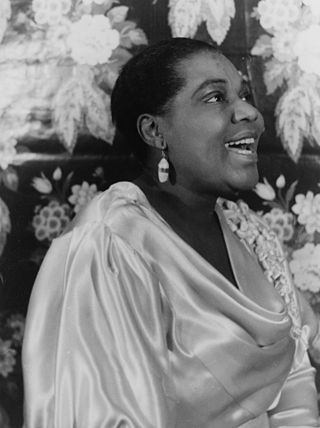
Several African American blues singers and musicians composed songs about the culture of Hoodoo, including W.C. Handy, Bessie Smith, Robert Johnson, Big Lucky Carter, and Al Williams. African American blues performers were influenced by the culture of Hoodoo and wrote songs about mojo bags, love workings, and spirits. Their songs brought awareness of Hoodoo practices to the American mainstream population.

Several blues songs describe love charms or other folk magic. In her "Louisiana Hoodoo Blues" Gertrude Ma Rainey sang about a Hoodoo work to keep a man faithful: ""Take some of you hair, boil it in a pot, Take some of your clothes, tie them in a knot, Put them in a snuff can, bury them under the step…." Bessie Smith's song "Red Mountain Blues" tells of a fortune teller who recommends that a woman get some snakeroot and a High John the Conqueror root, chew them, place them in her boot and pocket to make her man love her. Several other Bessie Smith songs also mention Hoodoo. The song "Got My Mojo Working," written by Preston "Red" Foster in 1956 and popularized by Muddy Waters throughout his career, addresses a woman who is able to resist the power of the singer's Hoodoo amulets.
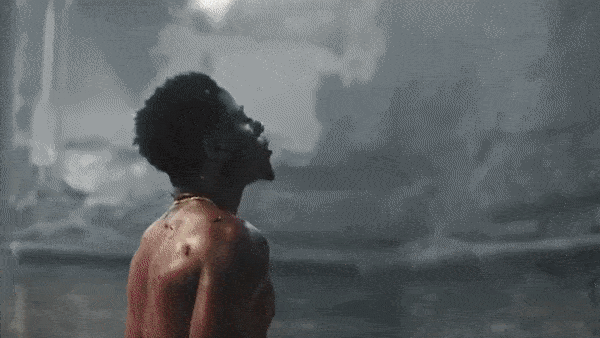
Hoodoo practitioner Aunt Caroline Dye was born enslaved in Spartanburg, South Carolina and sold to New Port, Arkansas as a child, where she became known for soothsaying and divination with playing cards. She is mentioned by name in the Memphis Jug Band's "Aunt Caroline Dye Blues" (1930) and in Johnny Temple's song "Hoodoo Woman" (1937).

Blues singer Robert Johnson is known for his song about going "down to the crossroads" to sell his soul to the devil to become a better musician. Some authors suggest that the song invokes a Hoodoo belief in crossroads spirits, a belief that originated in Central Africa among the Kongo people. However, the devil figure in Johnson's song, a black man with a cane who haunts crossroads, closely resembles Papa Legba, a spirit associated with Louisiana Voodoo and Haitian Vodou

#blues music#memphis#vodun#voodoo#hoodoo#african#afrakan#kemetic dreams#africans#afrakans#brown skin#afrakan spirituality#african culture#rootwork#ancestor veneration#pagans of tumblr#conjure#witchblr#african music
56 notes
·
View notes
Text
Wes Anderson’s Fantastic Mr Fox is the best anthropomorphic media about gender identity and it does so without making animal species a metaphor FOR gender in fact that’s kind of the whole point and beauty of it and why it works. Their animal natures all reflect their human natures, their personalities, in a way reminiscent of classic folktale while allowing gender to exist amongst animals the way it does among people, making it easier to resonate with these themes rather than pulling an anthro bunny girl “radicalization of gender” (because gender and race operate very differently when taken as individual attributes of identity, and by presenting the two as comparable facets of the same dynamic, the way a writer may decide to compare the history and dynamics of African American identity to Native American identity or to whiteness as a construct——because the way the white man oppresses the non white man and the way he oppressed the white woman are fundamentally different and these sort of “what if woman was a fantasy race” analogies obfuscate that and the oppressive relationship between white women and non-white men AND women)
Like the movie basically presents Mr. Fox’s notion that a fox is 2 things
-a wild animal
-a gentleman thief
And it’s no coincidence that one is a product of nature, you’re either born a Fox or you aren’t, and the other is a fully social construct. It is also a gendered construct. Mr Fox (and others) correlate foxhood and manhood throughout the film and in ways consistently demonstrated to be harmful to everyone
Because Mr Fox correlates his Fox identity wi h his gender identity he feels isolated from both sectors as the only adult male Fox in the movie, he doesn’t attempt to reach out to his wife about his foxy dissatisfaction, his cravings to hunt and outsmart humans, because he is correlating these feelings with both his foxhood and his masculine ego, and in recognition of his wife’s femininity determines that she is inherently incompatible with understanding these feelings, despite them both being foxes
It’s also representative of his office-kilter friendship with Kiley and his pseudo-antagonism with Badger, both other adult men, one a husband and father himself, but neither foxes, and so Mr Fox feels frustrated when neither empathize with his fox-based feelings and needs despite them all being men
It’s also reflected in how the children are treated by Mr Fox and those around them as a whole. Ash is by and large shown to be TERRIBLE at performing masculinity while also extremely aggressive, irritable, and desperate TO perform ‘masculinity’. Because despite his poor athletic abilities on the field he is a natural in the actual hunts themselves, and is shown to genuinely enjoy them both as a bonding activity with his father but also of their own merit. He is clever and fast on his feet and a creative thinker, he also has that natural drive to “prove” himself that Mr Fox also describes in the waterfall scene as a fundamental Fox-prone temperament. Mr Fox, Felicity, and Ash are fundamentally extremely similar people with extremely similar temperaments and complimentary skills and inclinations. Ash is an EXTREMELY good and natural Fox, it helps that he has maybe the most “wild” appearance when mask-less, dark circles under the eyes and rough fur that gives him a wild edge the other foxes lack in their design
Comparatively Kristofferson is a young gentleman in the making but not very foxy at all. He is a very skilled athlete, very composed emotionally (contrasted with the wild emotional outbursts of his wild Fox families and their weird games of emotional repression and run around) yet the people around him constantly reinforce the idea that these are natural FOX attributes because foxes being “gentlemen thrives” has been correlated as an inherit aspect of foxhood, being a Fox who is good at being a gentleman must indicate a Fox who is good at being a thief and at being a wild animal, when neither could be further from the truth for Kris, who has few natural instincts, and morally opposes stealing itself. He is rather similar to Kiley, a non Fox man who Mr Fox continuously pushes into Fox scenarios because he wants a companion in BOTH his foxhood AND his manhood because he has determined they are one in the same. It’s also why Kristofferson excites him so much, because if the kid is a Fox and this good at being a young gentleman he must clearly also be a “wild” animal and a great thief when he ISNT because those traits are all differently and not inherently linked. Mr Fox is so swept up in his belief that masculinity and foxhood must me inherently linked or one in the same that he unintentionally hinders his own plans of thievery by enlisting poor poultry thieves and ignoring the sheer Fox talent in his own family
It’s also why his marriage with Felicity nearly falls apart, because Mr Fox insists that foxhood is an extension of manhood he ignores the own Fox related feelings and needs of his wife and presumed that his nostalgia for stealing chickens and his need to feel clever and “fantastic” are concepts that she could not empathize with because she is a woman, meanwhile it is because she is a woman, and a wife, and a mother, that Felicity keeps those feelings controlled enough to keep her family and community safe. She recognizes her gender and her foxhood as separate aspects of a single identity and therefore is able to balance them to what she feels is appropriate, she is self aware and therefore able to express self control. What’s really interesting is the film also suggests that her experience with prefect helped In her recognition of this relationship, her sudden fan unexpected introduction of a third identity that conflicted with the needs and desires of another, yes foxes love to steal and outwit farmers and escape danger, but mothers also need to keep their children safe and cared for and she recognized that she could not maintain both the life of a thief and the well-being of her child, and that the latter was simply more important to her. This is why she’s so upset and angry with Mr Fox and tells him she loves him but she shouldn’t of married him, because by failing to recognize these roles and manage them Mr Fox has communicated that he does NOT share this same value, or doesn’t possesses the maturity and self control to properly practice it. He cannot get over his masculine ego to express his discontentment with his non-Fox-esq life to the other adult Fox IN his life because she is a woman, and by failing this his cannot keep his Fox-feelings in-check to prevent himself from putting his family in danger.
It’s also why Felicity is the one who is able to get through to Ash, because she doesn’t correlate gender and foxhood she is able to recognize that Ash is very much 100% red blooded Fox just like his parents are, but because he cannot perform traditional masculinity this aspect of himself gets overlooked by his father and misunderstood by other adults as Ash tries to cope and overcompensate this disconnect with aggression (something both masculine AND Fox like)
There are some readings that Ash is trans (specifically a trans woman egg) and both readings absolutely support each other. The beaver bully also addresses Ash’s lack of masculinity as femininity but this is also based off a binary model so a NB reading of Ash is also possible. We do not get enough of Felicity or Agnes to really comprehend what “Fox femininity” looks like as a whole to compare Ash’s behavior with. Ash could be equally unsuited towards both. Ash also wears a costume throughout the movie and this can be read as discomfort with Ash’s own identity and body, another failed attempt to project masculinity that doesn’t feel right to Ash.
The lack of other foxes in the movie also helps to convey that Fox-ness is less of a cultural construct, while the animals certainly all have a shared cultural understanding of what a Fox is, the preterition for thievery, risk taking, and cunning that all three red foxes show in the movie is framed more in the way that shared family behavior is often understood. Being “a Fox” is less comparable to “being a Texan” or “being a man” as it is to “being a belcher” or “being a Simpson”. However Mr Fox is too self centered initially to recognize this relationship and instead correlates foxhood to his other most important identity, his manhood, and comes to the conclusion he is the only “true” Fox because he is the only Fox man in his family or community
It’s also been highlighted in other readings that his phobia of wolves is likely a metaphor or derived from his fear of wild inadequacy, that his failure to live up to his standard of what a real Fox, a real wild animal is, is due to him being inadequate at those roles rather than—-as pointed out by the Felicity analysis—-simply the sign of a multifaceted man balancing different identities and values. Felicity doesn’t fear wolves because she knows her dedication to her family and to painting over stealing were choices she made based on other aspects of her identity and other values outside of how Fox-like she is, while for the first half of the movie Mr Fox has yet to come to this understanding and instead internalizes his failure to live in a fancy house off of his earnings as a wild farmer outsmarting bird stealer as his failure to be a Fox, a wild animal, and a man, or in his conflated logic, his failure to be a Fox
The inherent conflict in this conflation is even something Felicity highlights in their real rate discussion, she likes living in a hole because it’s Fox-like, she has a Fox instinct to burrow. Mr Fox presumably does too but is valuing the “value” of a home as the value of a man and his ability to provide for his family OVER his value of his Fox instincts, AND is valuing his Fox-based desire to “show off” and “flaunt” in front of danger OVER the OTHER Fox instinct to burrow away from predators to stay and keep their cubs safe. He is making a choice similar to how his wife has made choices with her life however he is doing so in the most self-centered of ways. He is more in control of his values and identity-expression than he admits because it benefits him personally to play stupid and powerless, “foxes will be foxes” which is where Felicity’s anger with him and Ash’s frustration with himself stem from,
Because Mr Fox refuses to recognize them as fellow foxes, because doing so would require him to acknowledge the inherent responsibility he has for his behavior.
331 notes
·
View notes
Text
I haven’t posted here in a while but found myself in a rabbit hole on this last day of Women’s History Month 2024.
It started with the song Jeepers Creepers, which until today I thought was just a jingle to advertise sunglasses in the 70s.
Ethel Waters recorded the first known version in November 1938, just a few months before Louis Armstrong’s recording in 1939.
Original music composed by Harry Warren and lyrics by Johnny Mercer for the 1938 movie Going Places, in which Armstrong performed.
Ethel Waters was also the first African American woman to integrate Broadway when composer Irving Berlin awarded her a starring role in his Broadway musical, As Thousands Cheer.
youtube
#ethel waters#jeepers creepers#women in history#women’s history month#broadway#hearwhatshesaid#womenvoices#jazz standards#women voices#standing on the shoulders of giants#Youtube
4 notes
·
View notes
Text

Group portrait of Frederick J. and Harriet Loudin with musicians around a piano in studio. Loudin holds sheet music on piano stand; woman pianist is sitting at piano. Printed on sheet music cover: "Mr. J.F. Jones. For the honor of the Queen. Words written by Sidney E. Auchinleck, music composed by Charles F. Phillips." Embossed on front: "Allison's, Belfast."
E. Azalia Hackley Collection of African Americans in the Performing Arts, Detroit Public Library
#loudin#music#belfast#piano#music history#african american history#frederick j. looudin#allison's#vintage#detroit public library
40 notes
·
View notes
Text
MOGAI BHM- Belated Day 21!
happy BHM! today i’m going to be talking about some famous ‘black firsts’!
Black Firsts in Science-
In 1965, David Harold Blackwell became the first Black member of the National Academy of Sciences
Robert H. Lawrence was the first Black astronaut; Mae Jemison was the first Black female astronaut, and Guion Bluford was the first Black astronaut to actually travel in space
Thomas Jennings was the first Black patent holder in the U.S, and Judy Reed was the first Black woman patent holder in the U.S
Daniel Hale Williams performed the first successful heart surgery
James Smith was the first officially trained Black American doctor
Robert Freeman was the first Black American dentist
Black Firsts in Politics-
Macon Allen was the first Black American admitted to a law school, and Charlotte Ray was the first Black woman admitted to a law school.
William Henry Hastie was the first Black federal Judge, and Constance Motley was the first Black female federal Judge
Thurgood Marshall was the first Black SCOTUS Justice
Alexander Lucius Twilight was the first Black state-elected official
Pierre Landry was the first Black city mayor, and Carl Stokes was the first Black mayor of a major US city
Jonathan Wright was the first Black state supreme court justice
Hiram Revels was the first appointed Black US Senator, and Edward Brooke was the first elected Black US Senator
P.B.S Pinchback was the first appointed Black state governor
Crystal Fauset was the first Black female legislator in the US
Shirley Chisholm was the first Black female U.S representative
Carol Braun was the first Black female U.S Senator
Joseph Rainey was the first Black person to serve in the US House of Representatives
Joseph Jenkins Roberts was the first African-American president of any nation (Liberia)
Black Firsts in Education-
Theodore Wright was the first Black graduate of an Ivy League School
Lucy Stanton was the first Black woman to graduate college in America
Charles Reason was the first Black college professor
Daniel Payne was the first Black college president
Dr. David Peck was the first Black person to graduate from medical school
Alexander Lucius Twilight was the first Black person to receive a degree from an American college
Mary Patterson was the first Black American woman to earn a B.A
Fanny Coplin was the first Black woman to become principal of a school
Richard Greener was the first Black Harvard graduate
Black Firsts in the Arts-
Lucy Terry was the first Black American poet and Phillis Wheatley was the first published Black American poet
Gwendolyn Brooks was the first Black Pulitzer Prize winner
William Brown was the first Black American novelist, and Harriett Wilson was the first Black female American novelist
Toni Morrison was the first Black winner of the Nobel Prize for Literature
Francis Johnson was the first published Black American musical composer
Marian Anderson was the first Black member of the Metropolitan Opera
Harry Swan was the first Black American to found a record label, Black Swan Records
Count Basie was the first Black person to win a Grammy, and Ella Fitzgerald was the first Black woman to win a Grammy
William Lane was the first nationally famous Black dancer, and Arthur Mitchell was the first Black principal dancer in a major dance company
Oscar Micheaux was the first Black film director
Hattie McDaniel was the first Black person to win an Oscar, and Juanita Hall was the first Black person to win a Tony
William Still was the first Black American to both direct a major orchestra and have their composition performed by a major orchestra
Black Firsts in Sports-
Oliver Lewis was the first Black jockey to Win Kentucky Derby
Moses Walker was the first Black professional baseball player
John Shippen Jr. was the first Black professional Golfer
Marshall “Major” Taylor was the first Black world cycling champion
George Poage was the first Black Olympic medalist at the Summer games, and John Taylor was the first Black Olympic gold medalist at the Summer games
Jackie Robinson was the first 20th century Black MLB player
Rajo Jack de Soto was the first Black professional race car driver
Willie Thrower was the first Black NFL quarterback
Willie O’Ree was the first Black NHL player
Alice Coachman was the first Black woman to win an individual gold medal at the summer olympic games
tagging @metalheadsforblacklivesmatter @bfpnola @intersexfairy
29 notes
·
View notes
Text
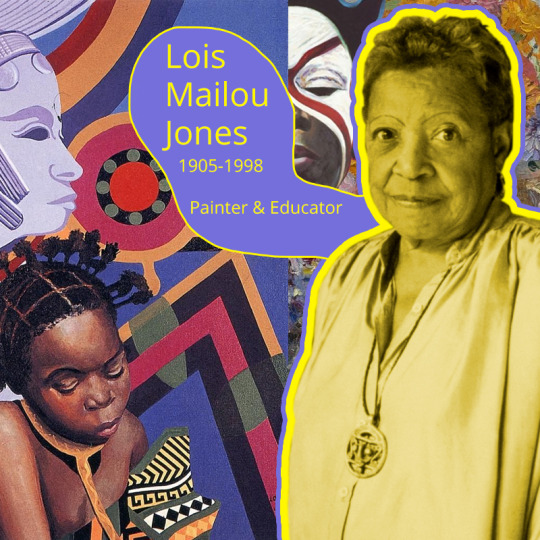
Lois Mailou Jones was born in Boston, Massachusetts.
Her parents, a cosmetologist and a lawyer, encouraged her interest in art from childhood.
While always a Bostonian at heart, she did do much of her growing up in Cape Cod at Martha's Vineyard where her parents bought a house. There, she would meet great influences on her life. Artist, Meta Warrick Fuller, Novelist Dorothy West, and Composer, Harry T Burleigh. And with such a pedigree as her influences, she could only be destined for great things.
She attended the High School of Practical Arts in Boston and took night classes at the Boston Museum of Fine Arts through a scholarship. Her first exhibition, was at just seventeen, in Martha's Vineyard.
She was also apprenticed to costume designer Grace Ripley, and this sparkled her interest and influence by African masks.
She continued studying at the Museum of Fine Arts in Boston, studying design and winning a scholarship and also took night courses at MassArt, then called the Boston Normal Art School, while working toward her degree.
She graduated and went on to get her graduate degree from the Design Art School of Boston. Then later, in 1928, the shift happened. She attended Howard University, and began to focus on painting.
A life longer learner, she never stopped going to school. She took classes and earned more degrees throughout her life.
She began teaching soon after finishing college (the first one), but the director of the Boston Museum School refused to hire her because she was a black woman.
In 1928 she was hired by Charlotte Hawkins Brown to teach at the newly formed art department at Palmer Memorial Institute, a black prep school in North Carolina.
If it wasn't clear already that Lois was renaissance person, while teaching at the prep school, she also taught folk dance, coached basketball, and played piano during church services.
But soon she was off to Washington DC. Recruited by James Vernon Herring to join the Art Department at Howard University.
She would stay there as a professor of both design and watercolor until her retirement in 1977.
Through the 1930s she sough recognition. She began to exhibit her works with the William E Harmon Foundation. The first piece, a simple charcoal drawing of a young black man, entitled Negro Youth (1929).
She spent time in Harlem as the Harlem Renaissance began. By this time she had been a designer, leaned into portraiture, and now began to meld the two disciplines. A unique style began to develop that was all her own.
In 1937, Lois received a fellowship to study in Paris, France at the Académie Julian. In that year abroad she produced 40 paintings, watercolor and en plein air. Two pieces were selected for exhibition at the Salon de Printemps at the Société des Artists Fraçais.
Like many black artist that traveled abroad, Lois fell in love with France where she felt more free and more accepted.
She would extend her time abroad and travel to Italy, but she did return the US following.
She traveled often to France, staying with her colleague and friend, Céline Marie Tabary. They no doubt influenced each other's work, but Lois was also influenced by the culture around her, and it's visible in her work from the geometry of her shapes to her use of color.
In 1941, Lois would enter a painting into the Corcoran Gallery's anuual competition. At this time in history, black Americans were not allowed to submit their own art. So, she had a colleague at Howard University, Tabary submit it for her in order to get around the rule.
For her piece, Indian Shops Gay Head, Massachusetts, she won the Robert Woods Bliss Award. Though, just as she could not submit her own work, she also could not pick up her own reward. But Tarbary would do this for her as well.
These difficulties did not deter Lois. She only dug her heels in and kept working.
She worked alongside and within the Négritude movement. Her work the visual for the primarily literary movement. For example, her piece, Parisian Beggar Woman was completed with text from Langston Hughs.
Back in 1934, Lois met Lois Vergniaud Pierre-Noel while she was a student in Columbia University. A prominent Haitian artist, they corresponded for nearly twenty years before marrying in the South of France in 1953.
From here, her frequent trips to Haiti would great influence her work.
In 1954 the Haitian government invited her to paint the people and landscapes of Haiti, and she returned to the country often as well as to France.
The works she produced between the mid 50's and mid 60's are among her most prominent and well know works.
As time went on, she was still extremely prolific and her style only becoming more colorful and more seamless in it's blending of Post-Impressionist, African and textile-like design.
In 1990, The Meridian International Center with the help of Lois, created an exhibition that toured the US for several years.
While this was not her first exhibition or her first solo exhibition, this was the first that garnered national attention.
While her skill was incredible, she did not paint what was in vogue for black artists. Despite this lack of appreciation, her work is in museums all over the world. From Haiti, to the White House.
Lois would die in 1998 at her home in Washington DC at the age of 92.
While history has done Lois a disservice, she was so prolific that's easy to see her work today. And it truly is incredible. All her influences filtered through her into something unique and challenging.
If you'd like to see her work or learn more about her life:
Loïs Mailou Jones: Creating A New African-American Image
Smithsonian American Art Museum - Lois Mailou Jones
Illustration History - Lois Mailou Jones
Black Past - Lois Mailou Jones
Medford Arts - Lois Mailou Jones
#lois mailou jones#Loïs Mailou Jones#Black Art#Black Artist#Black History Month#Black Art History#Art History#American History
15 notes
·
View notes
Photo
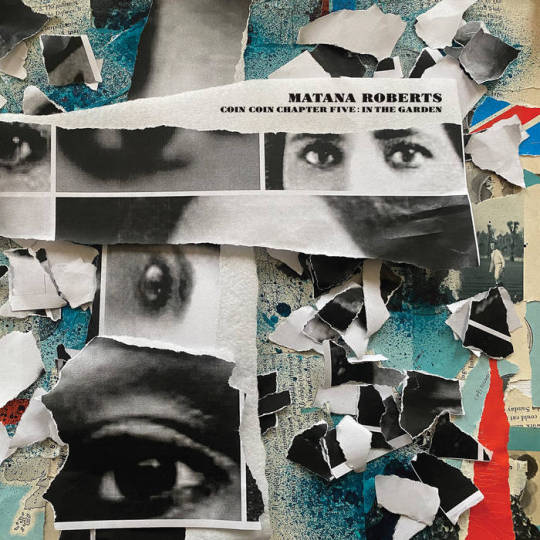
Coin Coin Chapter Five: In the garden… is the latest instalment in composer, improviser, saxophonist, bandleader and visual artist Matana Roberts’ visionary project exploring African-American history through ancestry, archive and place. Weaving together elements of jazz, avant-garde composition, folk and spoken word, Roberts tells the story of a woman in their ancestral line, who died following complications from an illegal abortion. At a time when reproductive rights are under attack, her story takes on new resonance. “I wanted to talk about this issue, but in a way where she gets some sense of liberation,” Roberts explains. By unpacking family stories and conducting extensive research in US public archives, Roberts has created a rounded portrait of a woman who is, as their lyrics put it, “electric, alive, spirited, fire and free.”
Each part of Coin Coin explores radically different musical settings, from the free jazz and post-rock eruptions of Chapter One to the solo noise collage of Chapter Three. Featuring a new ensemble steeped in jazz, improvisation, new music and avant-rock, helping to expand the project’s existing sonic palette, Chapter Five is no exception. Roberts is joined by fellow alto saxophonist Darius Jones, violinist Mazz Swift (Silkroad Ensemble, D’Angelo), bass clarinettist Stuart Bogie (TV On The Radio, Antibalas), alto clarinettist Matt Lavelle (Eye Contact, Sumari), pianist Cory Smythe (Ingrid Laubrock, Anthony Braxton), vocalist/actor Gitanjali Jain and percussionists Ryan Sawyer (Thurston Moore, Nate Wooley) and Mike Pride (Pulverize The Sound, MDC). The late, great trumpeter jaimie branch, who was due to play on the album, receives a credit for “courage”. The album is produced by TV On The Radio’s Kyp Malone, who also contributes synths.
As a composer, Roberts draws upon strategies associated with the post-war avant-garde, including John Cage and Fluxus member Benjamin Patterson’s conceptual approaches to scoring and performance. The immersive work of Maryanne Amacher, in which “sound and the body almost collaborate” is another key influence. “That is the foundation for me of the Coin Coin work,” they explain. “It’s not just the alto saxophone as an instrument placed in the jazz canon, it's the alto saxophone as an instrument that can be utilised to affect the body.”
Listeners will be struck by Roberts’ ability to mould diverse sounds into a cohesive whole. The spoken word passages are accompanied by driving modal jazz on “how prophetic”, minimalist synth loops on “enthralled not by her curious blend” and cantering folk forms on “(a)way is not an option”. These are interspersed with instrumental pieces that range from avant-garde abstraction and squalling free jazz, to solo saxophone reflections and Mississippi fife and drums blues. There’s a further evocation of American roots music in the powerful group vocal arrangement of “but I never heard a sound so long”, adapted by Roberts from the plantation lullaby “All The Pretty Horses.”
While this new chapter of Coin Coin focusses on a female-identified protagonist, others haven’t (Chapter Three being from the perspective of a male ancestor) and Roberts intends for future chapters to continue to cover the breadth of the gender spectrum, as well as their Native American heritage. “I'm proud that people say that the Coin Coin work speaks of a woman's story. But I want to make sure that it retains its inclusivity, because what we look like is not always what you see.” This reflects Roberts’ own experiences as a queer person of colour. For the remaining chapters of Coin Coin, Roberts will continue exploring identity and ancestry. “Expect it to keep heading towards a liberation of the human spirit.”
5 notes
·
View notes
Text
“Far Cry 5 Stans are god’s curse on mankind,” or “a full timeline of the Faith Seed Stan who refuses to leave me alone”
Any black person who consistently acknowledges racism in video games can tell you that doing so opens them up to extreme mistreatment. White people have a way of interacting with racial issues solely through the lens of their own self actualization - racism is a “but what about me” problem to many of them, more a matter of assuring themselves that they’re “not bad people” then one of addressing an oppressive system of social control that regularly ruins lives and has led to multiple genocides.
Ubisoft, the company producing the Far Cry games, has a well documented history of racist abuse of power spanning decades. Here are ten articles from ten different news outlets you can read about it, if you care to. 1 2 3 4 5 6 7 8 9 10.
This has impacted their games since the beginning, but I don’t want to get off topic by delving into that. I’m just gonna take for granted that you’ll believe me when I say the Far Cry series has an issue with racism and move on from there.
On May 6th of this year, I made this long post about how the Far Cry games routinely subject their female characters of color to over-sexualization and graphic violence, a treatment which their white female characters are spared because of authorial bias and narrative privilege. As I expected, someone reblogged it to challenge what I was saying: they redirected the conversation from the racist content of the games to a defense of the aforementioned white woman, spoke in long, choppy sentences, and didn’t really seem to be absorbing what I was saying.
But they were also moderately polite, and came off as more ignorant than malicious, so I gave them the benefit of the doubt. You can still see this whole interaction on my blog, and I would encourage you to go look at it, but I’m including some short sections of it here just so we can establish this persons url, icon and style of writing.


With this conversation over, our contact ended until June 12th, when I made another post about racism in these games: namely, the way that the black female characters specifically are based off of racist stereotypes about African American women. Time and time again, they’re characterized as loud, brutish, masculine and vulgar, have white hairstyles and get treated like grown women at ages when they should be considered children.
For a second time, this same user reblogged it to challenge what I was saying, and for a second time, their reply had very little to do with the original topic of the post. In an addition which went on for ten paragraphs and over a thousand words, they rambled about Faith Seed and her characterization and treatment in the Far Cry 5 fandom, one very disconcerting sentence alluding to the fact that they were aware that this had little to do with what I was originally talking about, but were using me as a jumping off point anyways. Throughout the reply, they used the notably conservative tactic of pretending that the topic of racism had never been brought up so that they could control the conversation, omitting it’s mention entirely in favor of nitpicking minute word crimes against the white female character mentioned and twisting my entire original point to be about her. The long, choppy sentences were back in full force, and came together to form a body of text which was nigh on incomprehensible.
This isn’t the concerning part, though. You see, I had never actually looked that closely at the blog of the person I was replying to; I didn’t think I had to. But while I was trying to compose a reply to this massive word salad they had left on my doorstep, a friend pointed out to me that the first ever post made on their account was their reply to my May 2nd post. As in, they created their blog just to interact with me.
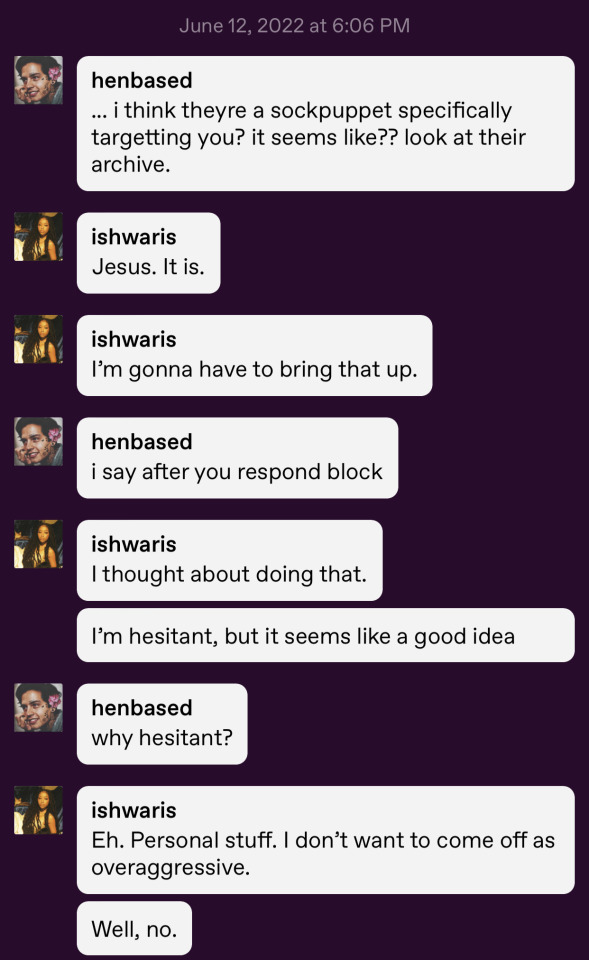

Not gonna lie, that creeped me the fuck out! It’s uncomfortable to think that somewhere out there is a stranger who is so devoted to tracking and combating what you say that they make an account just to speak to you and come back for more nearly a full month later. On top of this, they didn’t seem to be interested in the content of my words at all, as previously mentioned, and were just using my posts to ramble about their own opinions to an audience.
I could’ve asked them to either stay on topic or just stop writing replies, but I didn’t trust them to listen to me, a fear which would prove to be well-founded in the worst possible way in the coming weeks. So I decided to block them, and explained my reasoning to them as gently as possible before I did so. The below is what I said, with an important part highlighted.

I can’t include photos of the entire interaction here, it’s just too long. Again, though, I think anyone reading this who wants to get a gauge on what I was being subjected to should just go read the original: you can see my post, their entire biblically proportioned manifesto, and my reply to it on my blog.
After I blocked them, they deleted their account. I figured that was the end of them. Until this morning, when I woke up to find this charming message on a meme I made about liking the Insanity DLC and not liking the Control DLC and, of fucking course, the very Faith-centric Collapse DLC. Here, they’re alluding to the fact that the DLC expands on Faith’s abuse, which is fine in it’s own right.
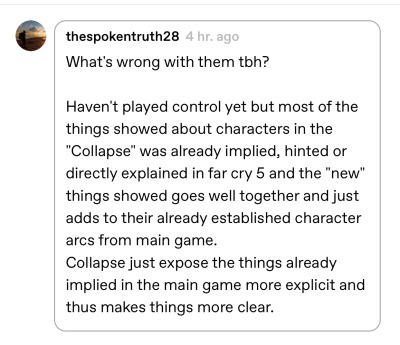
What’s not fine is making a new account to get around the fact that I blocked them so they could continue harassing me. This blog has a sunset icon and an url with numbers at the end. They speak in long, choppy sentences. And they created this account seventeen days ago, on June 14th - just two days after I blocked them, which caused them to delete their last sockpuppet.

So, they contravened my block. Very lazily, but still. They made a new account just to go on talking to me unimpeded. I called them out on this, this time much less politely. And they responded like this.
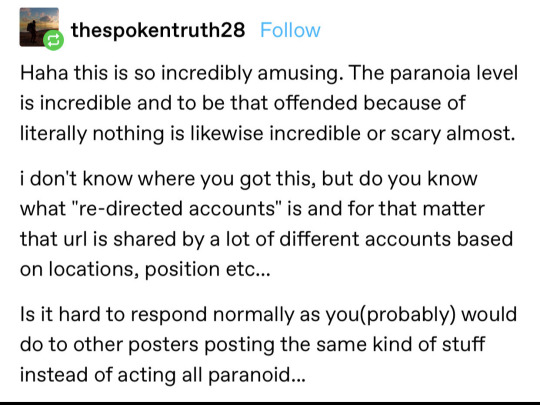
There is no mistaking who this user is. Their icon, url, style of speech, and time of creation all have them dead to rights as the last person who made an account just to write replies to me, and then deleted it as soon as I cut off contact. Anyone with eyes can see that - and yet here they are, attacking my sanity and attempting to paint me as mentally unwell for pointing out their misuse of the system. This is gaslighting, not just lying. Full stop.
I’m an abuse victim, as it turns out. A real abuse victim, as opposed to, you know, some pixelated model of a flowery bitch in a lace dress for White Knight McDebateMe to attach their ego to.
I don’t intend this as a callout post. This person has no main blog, they’re a series of sockpuppets. I’m not trying to ruin anyone’s fun. What I do intend to do is warn other people about drawing their attention. Without naming names, I’ve spoken to other users about this person’s behavior, and it’s caused them no small amount of long term anxiety and ruined their enjoyment of something which, by all means, should not be that serious. I don’t know what will happen after this, but I very much want it to stop, and the usual method of getting rid of unwanted attention - blocking - is not helping.
This post will be tagged with my personal discussions tag, where all these conversations are logged, and the subjects they run through whenever they make a new blog. Godspeed.
29 notes
·
View notes
Text

I am She and She is Me (spoiler alert)
Hey Fam! Let’s talk about Julie Dash’s very thought-provoking film, Daughters of the Dust. The film's breathtaking visuals and exhilarating narrative left me gasping for air. After a two-year battle with breast-cancer, I lost my mother in 2021. This is exactly the sort of film my she and I would have enjoyed viewing together while relaxing on her bed. Now that I have already screened it, this "Mother's Day" weekend, I would like to re-watch with my daughters.
The film is an Afrofantasy which offers a vision of timelessness by presenting a mystical image of Black womanity, history, and community that transcends a simplified comprehension of the African American experience. Each individual considers where they are in relation to the past, present, and future as they take back control of who they are, families, communities, and the world at large. Treasuring, utilizing, and sharing our collective past is essential. Yet, freedom also lies in the power of choice.
This film was created by a black woman, features black women, and is aimed deliberately at black female audiences. Dash created this evolving film without anticipating that one of the most prominent figures in the music industry, Queen Bey, would adopt it 25 years later. The stunning visuals of Beyonce’s Lemonade album explored themes of black womanity, southern customs, racism, and fury. Lemonade marked Bey's second visual album; however, it seems to be the very first time she composed original music just for the score of a visual album. Dash's film served as an obvious framework for Bey's vision, considering the subject matter and the attention to detail devoted to the photography within the film.
The American South, where Africans were forced to live in servitude, is celebrated in these two mystical works, "Lemonade" and "Daughters of the Dust." Although the Gullah village on the South Carolina coastline served as the setting for Dash's film, much of the film's gorgeous settings were re-created in Louisiana for Lemonade. Whimsical representations of black women sitting in trees and, in particularly, the usage of the trees' separateness as a communal place in both works highlight the significance of the natural world to the existences of black women. Of particular note, both works feature black women and their connections with one another in situations when neither males or whites are present. The narrative of the film centers primarily around black women, with male villagers only appearing as supporting characters. Both works highlight the many faces of black femininity. How thrilling, and potentially revolutionary, is it that present Black women artists are recognizing the contributions of Black women artists of the past!!! I am humbled to see this as the future and as a symbol of my ancestry as the granddaughter of a black woman, daughter of a black woman, and a mother of a young black woman.
2 notes
·
View notes
Text

“Frankie and Johnny” is one of America’s most famous murder ballads. It’s been covered by hundreds of artists, including Leadbelly, Louis Armstrong, Mae West, Sam Cooke, Bob Dylan, Johnny Cash, and even Elvis.
The song is based on the murder of the African-American ragtime composer Allen Britt, who was killed by his girlfriend Frankie Baker (pictured) in 1899.Frankie was a beautiful, successful prostitute who wore diamond earrings “as big as hen’s eggs.” Britt was her lover and pimp.
The couple quarreled when Frankie discovered him with another woman. She begged him to come home with her, but he went to a party with his new girl, Alice Pryar, instead. Britt came home late that night when Frankie was in bed. According to Frankie, they argued and, when her lover came at her with a knife to “cut her,” she grabbed her pistol from under her pillow and shot him.
At her trial, the jury agreed with Frankie’s need to defend herself. The judge even gave her back her gun. But many in her neighborhood felt that there were other answers to the mystery of what happened that night in her apartment.Within days of the trial, a song called “Frankie Killed Albert” was composed by Bill Dooley. The song—which evolved into the popular ballad “Frankie and Johnny”—was enjoyed by just about everyone except Frankie.
She hated the way people sang it when she went by. She hated the lyrics that proclaimed she’d killed Allen because he’d cheated on her, rather than because she’d had to defend herself. Some say that the song hounded her out of St. Louis.
She eventually wound up in Oregon running a shoeshine parlor.Even then, the popularity of Frankie’s story haunted her. It was the basis for the 1933 blockbuster film She Done Him Wrong, which jump-started the careers of Mae West and Cary Grant. Frankie angrily sued Paramount Studios, but she lost. She sued Hollywood again over the 1936 film Frankie & Johnny, but she lost again. Frankie died in 1952 before she could sue over Elvis Presley’s film Frankie and Johnny in 1966.
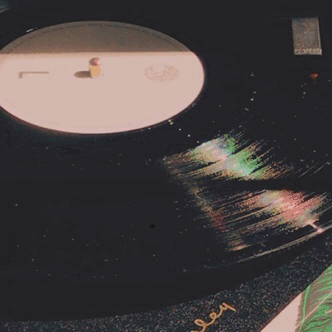
#frankie baker#oregon#african#blockbuster#kemetic dreams#afrakan#africans#brownskin#afrakans#brown skin#african culture#afrakan spirituality#elvis presley#mae west#cary grant#st louis#parlor#hollywood#bob dylan#sam cooke#music
82 notes
·
View notes
Text
Good Morning! Madame Justice here.
Hope you had a wonderful weekend and that you're looking forward to the week ahead. Here are some of my tips to start the week off on a good note, as well as a few of my study music favourites and an absolute tune if you feel like you need a boost of energy to start off the week in style.
Block out set times in the morning and afternoon for emails- I know I'm guilty of spending more time than is necessary responding emails. Set out 15 minutes at the start and end of the day to deal with these pesky messages
Try some power poses- If you are unsure of what a power pose is, think "Wonder Woman" stance or the type of poses other superheroes might do. I find they do wonders for my confidence, especially on big days with exams or interviews.
Create a plan for the day- Whether you have swimming practice or a lecture, creating a rough or detailed plan can help you maximise time as well as ensure that you create a good balance
My go-to study soundtracks-
The Theory of Everything [Johann Johannsonn]- this is by far my favourite music to work to. Dark Academia vibes and all-round stunning pieces of music.
Hidden Figures [Hans Zimmer]- This is a beautiful film following three amazing African-American women who worked for NASA during the space race. A wonderful and empowering film with an equally inspiring soundtrack.
The Duchess [Rachel Portman]- A wonderful soundtrack I was lucky enough to study at A-Level. Portman is a brilliant female composer and I would definitely recommened her other works too. (Trigger warning- this film contains depictions of rape and domestic violence. Please take caution when viewing and research the triggers in this film further before choosing to watch.)
Finally, something to get you hyped up in the morning-
Perfect Day- Chris Lord Alge Mix, Hoku
There is a reason this one may be familiar. If you are a fan of Legally Blonde then you will certainly recognise this as its iconic opening song. This is a must have as a law student.
youtube
That's all from me for now, have a good day and I'll see you soon!
Yours faithfully, Her Honorable Madame Justice x
3 notes
·
View notes